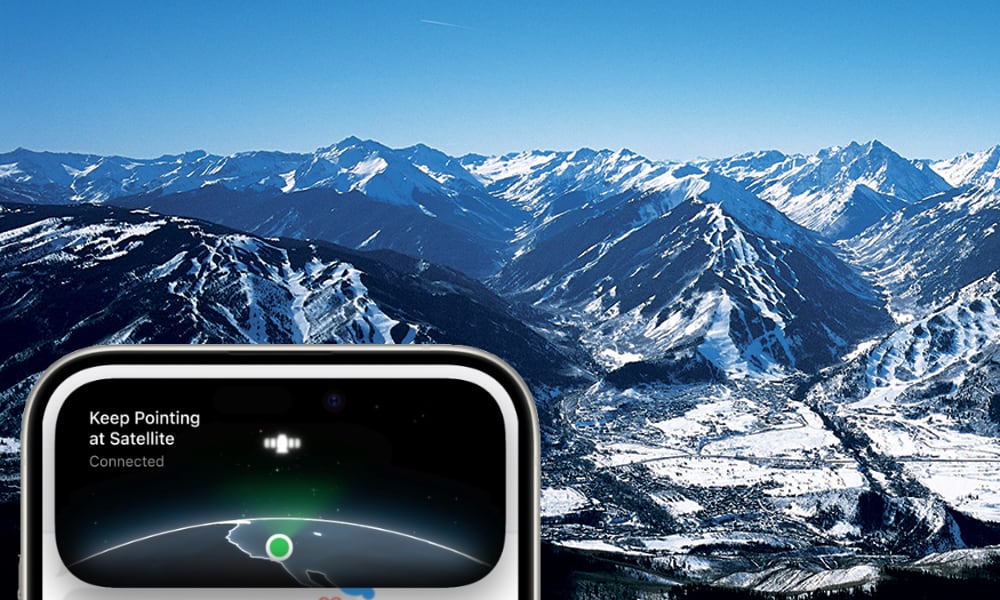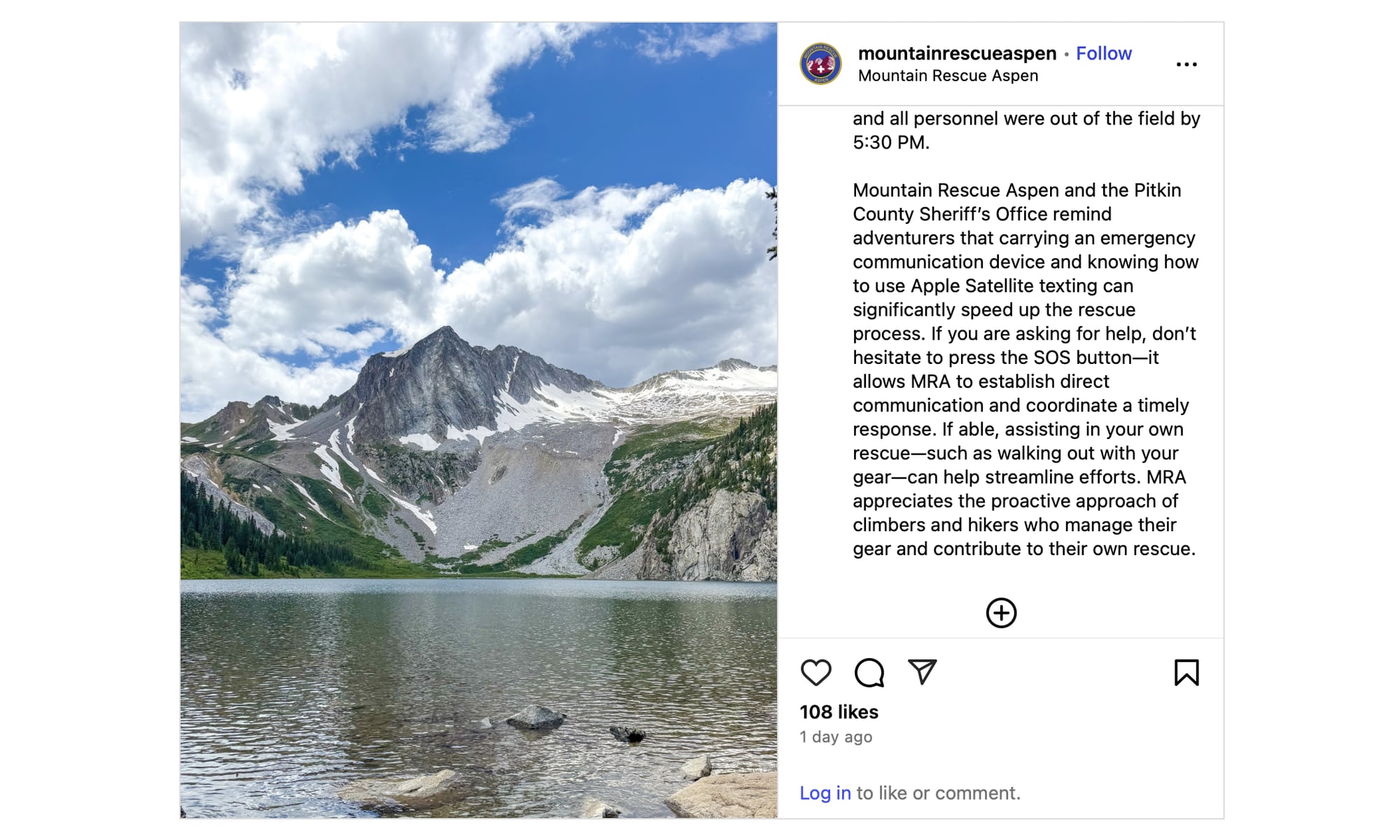Apple’s Satellite Messaging Saves Colorado Mountain Climber’s Life

Toggle Dark Mode
Apple’s technology once again comes to the rescue. In this case, the Messages via satellite feature on an iPhone enabled emergency responders to reach an injured man stranded on a Colorado mountain.
As reported by Denver’s KDVR News, a 53-year-old man injured his wrist this past weekend while descending from a climb up Colorado’s Snowmass Mountain. The man had successfully reached his destination and was glissading back down, a technique that involves controlled sliding, when he injured his wrist.
However, this case differs a bit from others we’ve reported. Instead of using Apple’s Emergency SOS via satellite feature to summon emergency services directly, the climber opted to send a text message to a family member using Apple’s Messages via satellite feature. Perhaps he figured a mere wrist injury wasn’t worth calling in the cavalry. It was the family member who notified the sheriff’s office and Mountain Rescue Aspen, an all-volunteer team of rescuers.
The rescue team responded and found that the man wasn’t able to walk out on his own, requiring 17 rescuers to assist in his recovery from Snowmass Lake, about 10,980 feet up and 8.3 miles from the nearest trailhead. Emergency dispatchers received the report from the family member around 8:25 a.m. and had completed the rescue by 5:30 p.m.
“Carrying an emergency communication device and knowing how to use Apple Satellite texting can significantly speed up the rescue process,” Mountain Rescue Aspen said in an Instagram post.

The agency also added that “If you are asking for help, don’t hesitate to press the SOS button — it allows MRA to establish direct communication and coordinate a timely response,” implying that the injured man might have been better off going straight for the Emergency SOS feature.
Emergency SOS via satellite was the first satellite feature that Apple introduced with the release of the iPhone 14 lineup in 2022. It later expanded that into Roadside assistance via satellite in iOS 17 and Messages via satellite in iOS 18.
Apple’s satellite features require an iPhone 14 or later, as only these models have the necessary radio hardware to communicate on the required satellite frequencies. While Apple’s satellite services differ from those offered by Starlink, which operate over 5G, the use of satellite bands enables Apple to make its services available globally without relying on government regulators or carrier partnerships.
The only limitations Apple faces are ensuring the necessary ground-based communications are in place. While an emergency request for assistance can technically be sent via satellite from anywhere on the globe, it’s pretty useless if nobody is available to come to your aid. Further, while emergency SOS and roadside assistance don’t require carrier partnerships, messages via satellite does as Apple is communicating into the carrier networks, which need to be equipped to route messages back through Apple’s satellite infrastructure.
As of this writing, Emergency SOS via satellite and Find My location reporting are available in 17 countries: Australia, Austria, Belgium, Canada, France, Germany, Ireland, Italy, Japan, Luxembourg, the Netherlands, New Zealand, Portugal, Spain, Switzerland, the UK, and the US. Roadside Assistance via satellite is more limited, as it requires partnerships with the necessary service providers, which include AAA and Verizon Roadside Assistance in the US, and Green Flag in the UK. Messages via satellite is limited to Canada and the United States, although it works on all major carriers.







